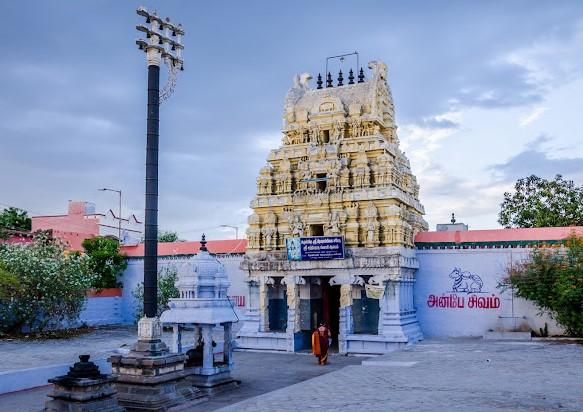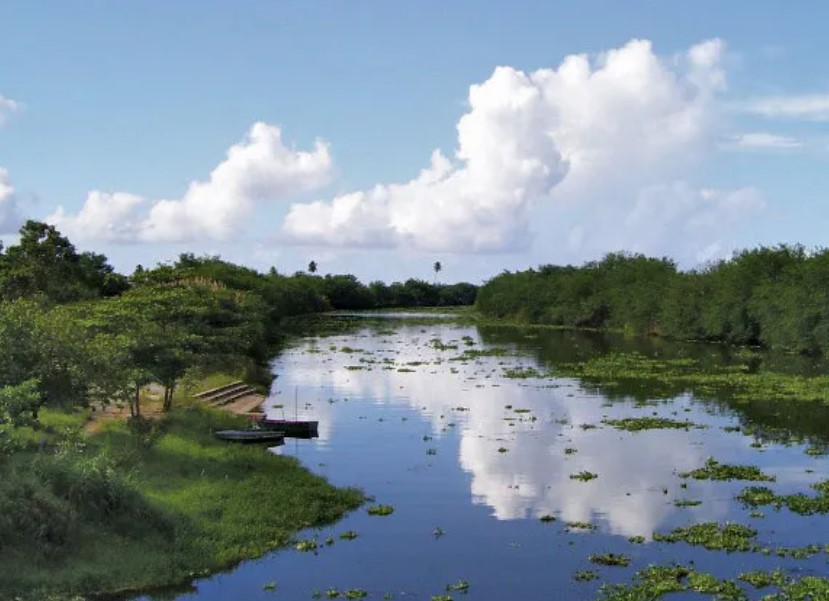The Sathyanatheswarar Temple, believed to have been built during the 5th century CE, is thought to be one of the earliest temples established by the Pallavas. This ancient temple predates both the Ekambaranathar Temple and Kailasanathar Temple in Kanchipuram.
The temple holds historical and religious significance, as it was venerated by the 7th-century Tamil Saivite poet Thirugnana Sambandar in one of his hymns in the Thevaram. During the Chola period, the temple and its surrounding locality were highly revered. An inscription of the Chola Emperor Rajendra Chola I refers to the place as Thiru Neri Karaikadu, a locality in Kachi Pedu.
According to inscriptions found within the temple, Lord Shiva was worshipped here as Thirukaraikadudaya Mahadevar, and the region was part of Jayamkonda Chozha Mandalathu Eyir Kottathu Kanchipuram. This highlights the temple's prominence during the Chola era and its connection to Kanchipuram's rich cultural and historical legacy.
PURANIC SIGNIFICANCE:
Worship by Indra and Budhan
Indra, the king of the Devas, and Budhan (Mercury) are believed to have worshipped Lord Shiva at this temple. The temple lies in a forest called Kaaraivanam, and hence the presiding deity is called Karaivananathar (Sathyanatheswarar).
Birth of Planet Budha
Chandra’s Misconduct: Chandra (the Moon) was a disciple of his Guru, Jupiter (Guru). He developed a desire for Dhara, the wife of his Guru.
The Yagna: Chandra conducted a Yagna dedicated to Lord Vishnu. As part of his Guru’s duties, Jupiter attended the Yagna with Dhara. During this event, Chandra enticed Dhara and convinces her to stay with him.
Budha’s Birth: Budha (Mercury) was born as a result of the union between Chandra and Dhara.
Guru’s Prayer to Shiva: Upon learning of this, Jupiter prayed to Lord Shiva and reclaimed Dhara.
Budha’s Penance: Brought up by Chandra, Budha grew up and felt deep pain upon learning about the circumstances of his birth. Seeking redemption, Budha performed penance at this temple and begged Lord Satyanatha Swami for a place among the Navagrahas (nine planets).
Shiva’s Boon: Lord Shiva appeared before Budha and assured him that he would be given a position among the Navagrahas at an appropriate time. A shrine for Budha is situated to the south of the Sanctum in the temple’s prakara.
Karaivananathar
Indra’s Desire: According to legend, Indra, the king of the Devas, was captivated by the beauty of Ahalya, the wife of Sage Gautama.
Deception by Indra: Indra disguised himself as a rooster and crowed early in the morning, causing the sage to leave for his daily bath at the river. In the sage’s absence, Indra entered the house to approach Ahalya.
The Sage’s Return: Sage Gautama sensed something was amiss and returned to the hermitage unexpectedly. He caught sight of Indra fleeing in the guise of a cat.
The Curse: Furious, the sage cursed Indra to have eyes all over his body.
Relief from the Curse: Indra wandered across the earth, praying to Lord Shiva for relief. At this temple, he saw Lord Shiva among the Karai bushes and worshipped him. Moved by Indra’s sincere devotion, Lord Shiva relieved him of the curse. From this event, Lord Shiva came to be known as Karaivananathar.
Kachinerikkaraikkadu
In ancient times, travelers used the Thirukalimedu path to reach Kanchipuram. This path was filled with spiny plants, earning the place the name Kachinerikkaraikkadu.
Other Names
The sacred site has been referred to by various names throughout history:
Karai Tirunagar
Sathyaviratha Kshetram
Sathya Viratha Natham
Indrapuri
Indiresam
Kachinerikkaraikkadu
ADMINISTRATION:
The temple is maintained and administered by the Hindu Religious and Endowment Board of the Government of Tamil Nadu.


